Changing climate patterns have led to natural disasters becoming more severe around the world, including Thailand which is facing the most serious drought in 40 years that has been caused by global warming, resulting in rainwater decreasing by 30-40 percent compared to the average yearly rainfall, while water levels in dams dried up. Moreover, the Thai Meteorological Department has predicted that this years’ drought will last until June when rain is likely to start falling again.
Ban Sam Kha: Learning from Dams and Managing the Drought Crisis
A key method that all sectors have agreed that can be applied to address the drought crisis is the teaching of His Majesty the King Bhumibol Adulyadej in which he said, “…The key principle is to have water to drink, to use for general purposes and to use for agriculture because life relies on water. If there is water, humans can live, but without it humans can’t. Without electricity, humans will survive, but without water, we will not…” which led to an “implosion” resulting in the establishment of the Prototype Community for Water Management at Sam Kha Village in Mae Ta District, Lampang Province.
Sub.Lt. Chai Wongtrakul, the Community Philosopher at Sam Kha Village in Mae Ta District, Lampang Province, or known as Muad Chai, one of the community leaders, has revealed that “Sam Kha Village” is located on a high mountain and lacks water storage in the area, thus, the village has often faced droughts in the past, leading to shortages in food resources and a lack of livelihood which resulted in locals falling into debt. Therefore, Muad Chai has brought villagers to learn about the construction of check dams at the Huai Hong Khrai Royal Development Study Center on seven occasions since 2002 in order to create an understanding and inspire the community to join hands in solving the drought issue. After experimenting with different methods, the community successfully constructed a check dam to slow the flow of water from upstream to downstream which allowed moisture retention in the soil and enabled the community to store water for use during the drought season. Moreover, the initiative has led to other projects such as gathering locals to build check dams and fire breaks to prevent against forest fires.
“His Majesty King Rama IX has taught us that we should use natural materials in the forest, as well as draw from our own strength and inspiration. However, many people in the village did not share the same belief until one of the youngsters here led them to build the dam. After trying out several solutions, we successfully built a working dam.”
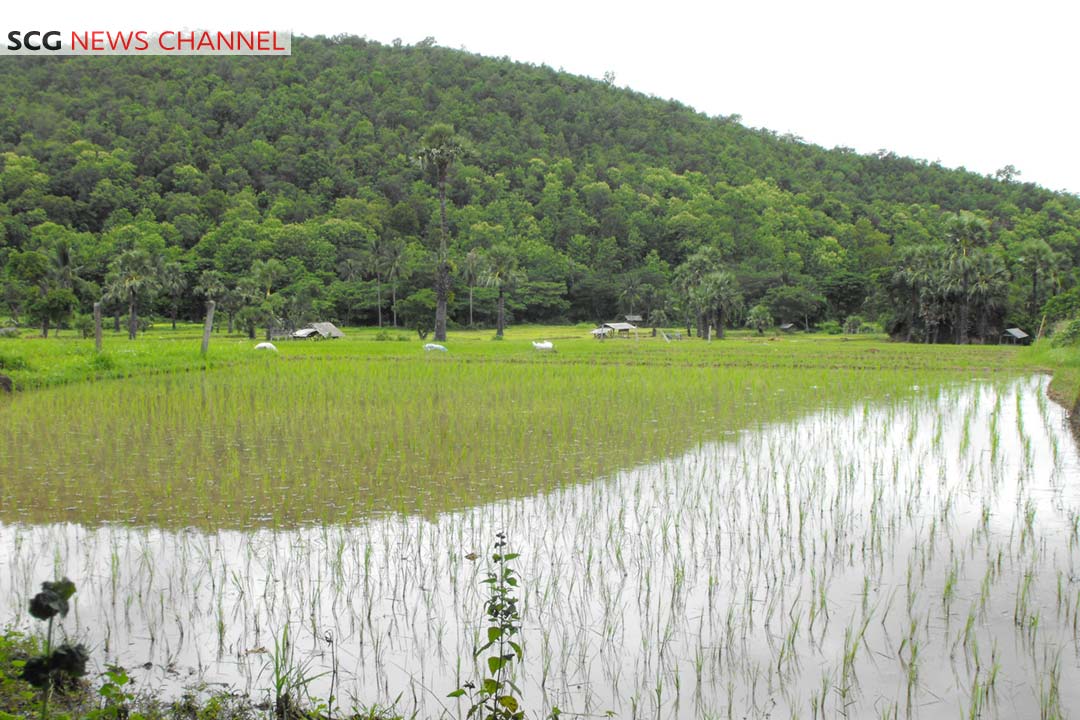
Three years after the construction of the dam, the soil has become moister and the water management initiative proved to have solved the drought issue that had persisted for 40-50 years. Moreover, the initiative help the community learn how to share their resources and pass through the crisis: whenever they have water they would manage the resources available and fairly distribute the water among the villagers. Ban Sam Kha has also expanded its learning center to sustainably develop other 4-5 subdistricts nearby, thus forming the Jang River Basin Network with “SCG” supervising the project while coordinating with public and private sectors in the area to carry out the project in a systematic and clear manner.
Coordinating the Power of Government-Private Sector-Communities
Though the drought crisis has become more severe, with cooperation between the government, the private sector, and communities, all stakeholders can share their responsibilities, promote engagement, and instill the role of the conservator among the younger generation in order to find a solution for this crisis.
“In order to fight against the drought, we need cooperation from these three groups. Once we put our ideas together, the communities can start to adapt and analyze the amount of existing water as well as the amount of water needed, then they can switch to growing crops that utilize the least amount of water, such as spring onions and garlic. Moreover, they need to focus on using water for consumption as well as create an understanding for those in the community to help each other. In certain communities that lack water, those in nearby communities are ready to share,” said Muad Chai.
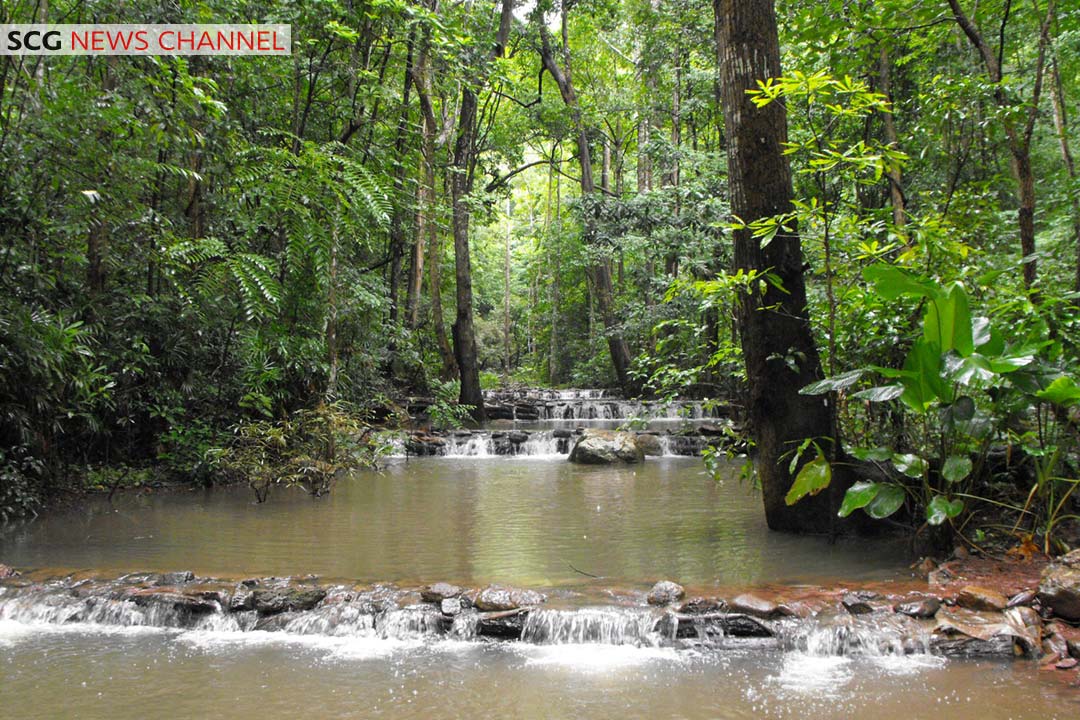
Kao Kham: Reviving Dried Soil with the Groundwater Banking System
Each community often has its own method of water management. For example, the Kao Kham Subdistrict Administrative Organization in Nam Yuen District, Ubon Ratchathani Province has faced severe drought that left locals unable to grow any crops, however, with this new initiative, the community has introduced a groundwater banking system that allowed them to store water for up to three years, eliminating any fears of drought.
Chatree Sriwichata, the leader of the Kao Kham Subdistrict Administrative Organization in Nam Yuen District, Ubon Ratchathani province revealed that the organization has followed the teachings of His Majesty King Rama IX in order to transform the dry soil in the area with water management methods by employing the “Groundwater Banking System”.
“Areas that are situated outside the irrigation zone have no large water sources and have often faced droughts and floods. During severe bouts of drought, water had to be transported to the area, costing up to 600,000 – 700,000 baht, until we finally discovered the teachings of His Majesty about the groundwater banking system.”
The local leader of the subdistrict said that apart from gaining knowledge which led to the success of the community in water management, engagement with community members was also important, from water management in individual homes to the agricultural sector. Here, locals worked together to plan for water management in the area and dug water from underground without relying on help from the public sector or the government.
“The community was able to carry out the water management scheme without relying on the central government. Each home would dig a small well which kept water from flowing to public drainage areas. When it rains, everyone would have a well that would send the water to the community well and then to agricultural areas to store the water in the groundwater banking system for future use in a sufficient manner.”
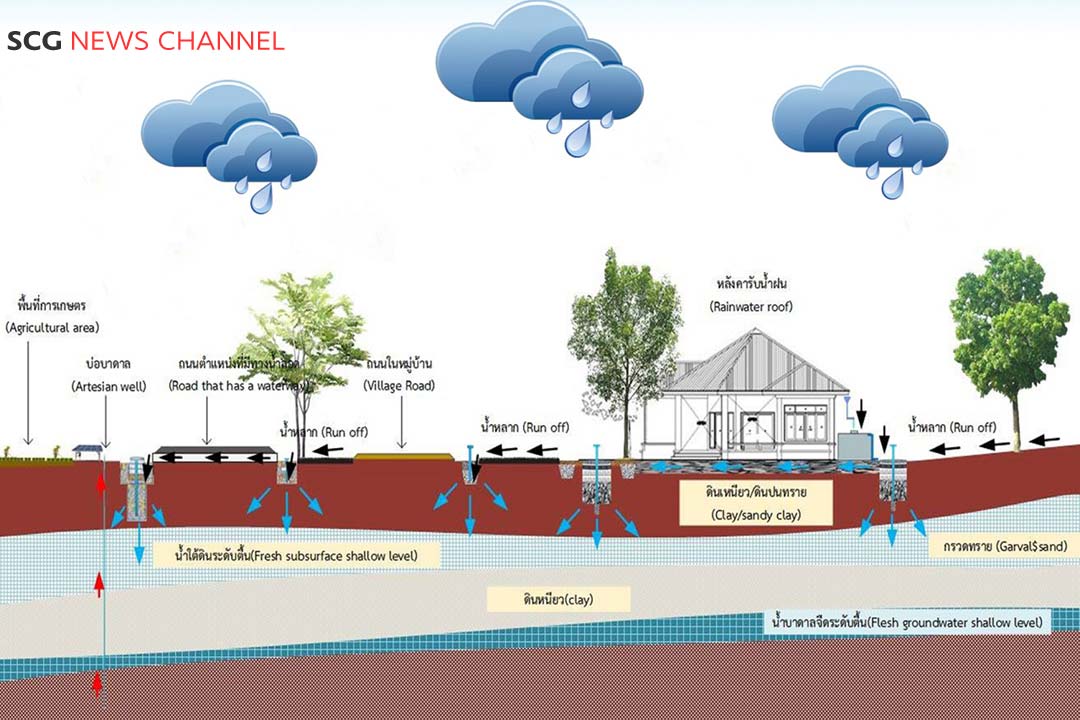
Applying Innovation for Community Water Management
Moreover, the Kao Kham Subdistrict Administrative Organization has adopted innovation to help with the water management program by installing a censor underground in order to measure the amount of time in which the water flows to the underground level, the amount of water, any contaminations, and also to analyze the quality of underground water. Thus, the Office of the Prime Minister has submitted the “Sufficiency Groundwater Bank” project to be considered for the 2020 United Nations Public Service Awards (UNPSA) with the objective to honor local administration services that are operating in line with the United Nation’s sustainable development guidelines.
“People in the community must know how much water they need, how much is available, and how to prepare to handle the risk of water shortages. Once the community understands all these factors and how much resource they have, they will be able to sustainably manage their water resources. Moreover, we need to follow up on the results and analyze the outcome in order to determine obstacles and find new opportunities for the project.”
SCG Conserves Water and Shares Water Management Lesson with 108 Communities
However, in order to sustainably manage water resources, communities may not be able to overcome the obstacles by themselves without outside support that will help to educate and facilitate them. Therefore, SCG – an organization that aims to carry out projects to conserve water resources with the belief that Water is Life – has initiated the “Conserving Water from Mountain to Mighty River” since 2003, starting from communities around SCG cement facilities and expanding the scope of the initiative to carry out the “SCG Helps 108 Communities to Overcome the Drought Crisis” project.
Bovorn Wannasri, Manager, Business Operations and Community Relations, The Siam Cement (Lampang), SCG, revealed that in 1994, the cement factory was founded in Lampang Province. At that time, the forest areas surrounding the facilities was in a bad condition, therefore, the SCG team initiated a project to replant the forest. However, forest fires occurred every year until the team decided to study the construction of check dams at the Huai Hong Khrai Royal Development Study Center. With this knowledge, they were able to revive the forest and start working with the communities around the factory.
“SCG is focused on facilitating the community. We don’t plan or carry out projects for them, and we do not focus on the monetary aspect. The community must implement the projects themselves while we help them gather information about the resources in the area, from the soil, the water, the forest, to economic crops. From this survey, we saw that the community was able to store less than 2 percent of rainwater for future use despite having all the necessary tools in place, from the water banks, the ponds, the check dams, to the groundwater banks.”
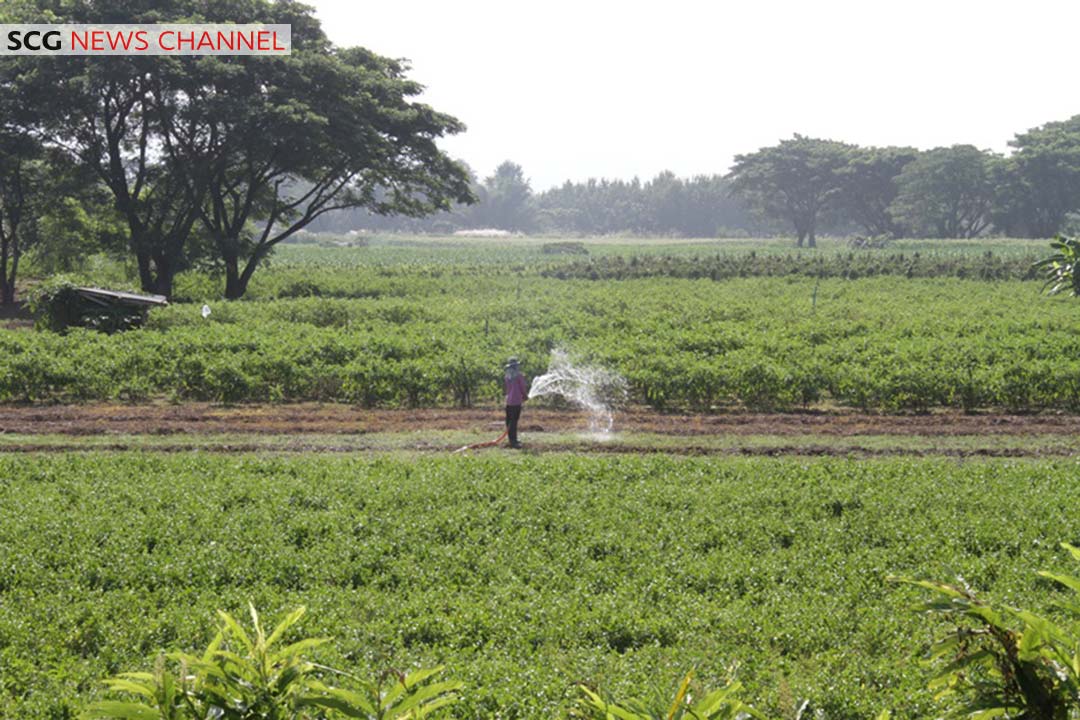
With severe drought this year, SCG is providing more knowledge and expanding its initiative to help manage water for 108 communities which have constantly faced droughts by encouraging them to work together to learn how to overcome the drought crisis by themselves. With the “SCG Helps 108 Communities to Overcome the Drought Crisis” project which is carried out in honor of His Majesty the King as well as to commemorate SCG’s 108th anniversary in 2021, SCG is working with the Utokapat Foundation under Royal Patronage of H.M. the King and the Hydro – Informatics Institute who is using technology to help plan for water management for areas with droughts and floods. Meanwhile, Siam Kubota is bringing in equipment to help seek water sources and excavate the area in order to develop water sources for the community. The objective of the project is to support communities to be able to solve the drought crisis by themselves in line with His Majesty the King’s teaching of “Knowledge and Morality” as well as use technology to enhance the efficiency of monitoring water resources, planning for water management, and planning for appropriate use of water to match the needs of each community.
Most importantly, SCG aims to strengthen communities to “understand, love, work together, engage with one another, and to rely on themselves” in order to fairly distribute water resources as well as educate other communities. For example, at Ban Sa Phae Nua Village in Ban Sa Subdistrict, Chae Hom District, Lampang Province, locals in the community were able to increase the amount of water in storage by building check dams and digging ponds by themselves, thus enabling them to survive through the drought season this year.
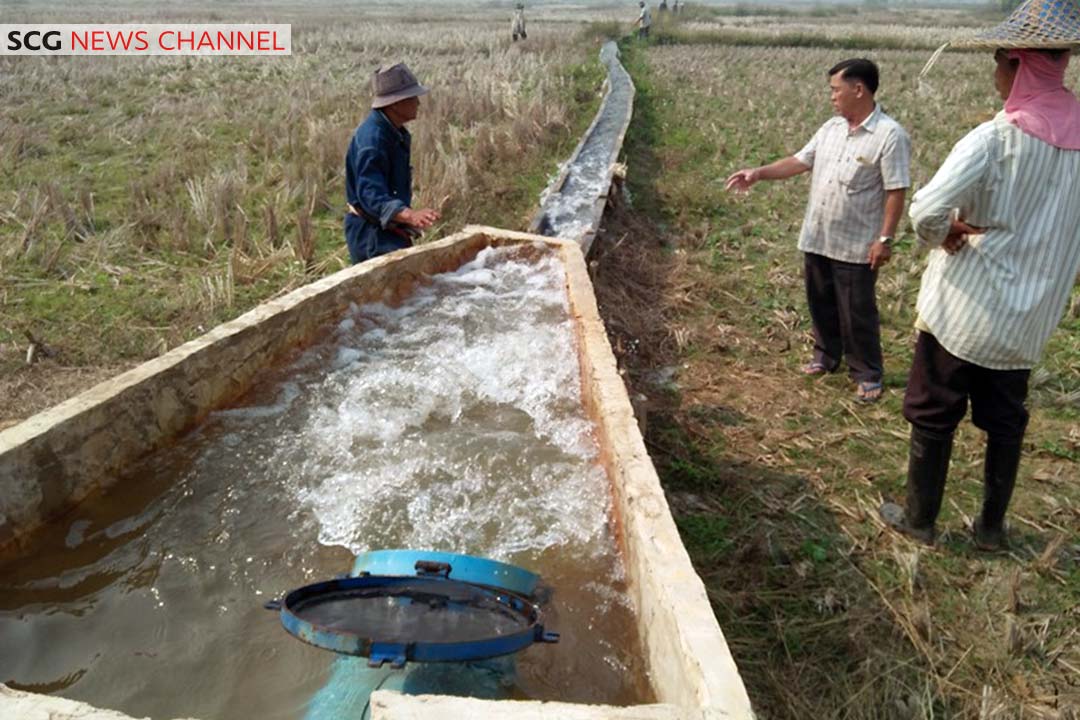
Introducing the 20-Year Water Master Plan: Enabling Communities to Fight Drought
The public sector is another key stakeholder who can implement various measures such as laws, regulations, and policies for water management that will allow all sectors to work together. Thus, the public sector has followed the teachings of His Majesty the King to combat the drought crisis and has introduced a water master plan that will sustainably address the issue in line with Thailand’s 20-Year National Strategy.
Pradub Kladkhempetch, Assistant Secretary-General, Office of the National Water Resource (ONWR), has said that after the 2018 Water Resources Act came into force, there has been more movement regarding the management of water resources. The act focused on the management, development, revival, and conservation of water resources and urged 38 related agencies to work together. Moreover, three levels of water management networks have been established. The National Level, which is the National Water Resources Committee led by Prime Minister General Prayut Chan-ocha, is tasked with determining a strategic plan, a master plan, as well as measures to manage water resources in the country, with the River Basin Level engaging with representatives from each local administrative organization, while the Water User Level interacts with representatives from various groups of water users.
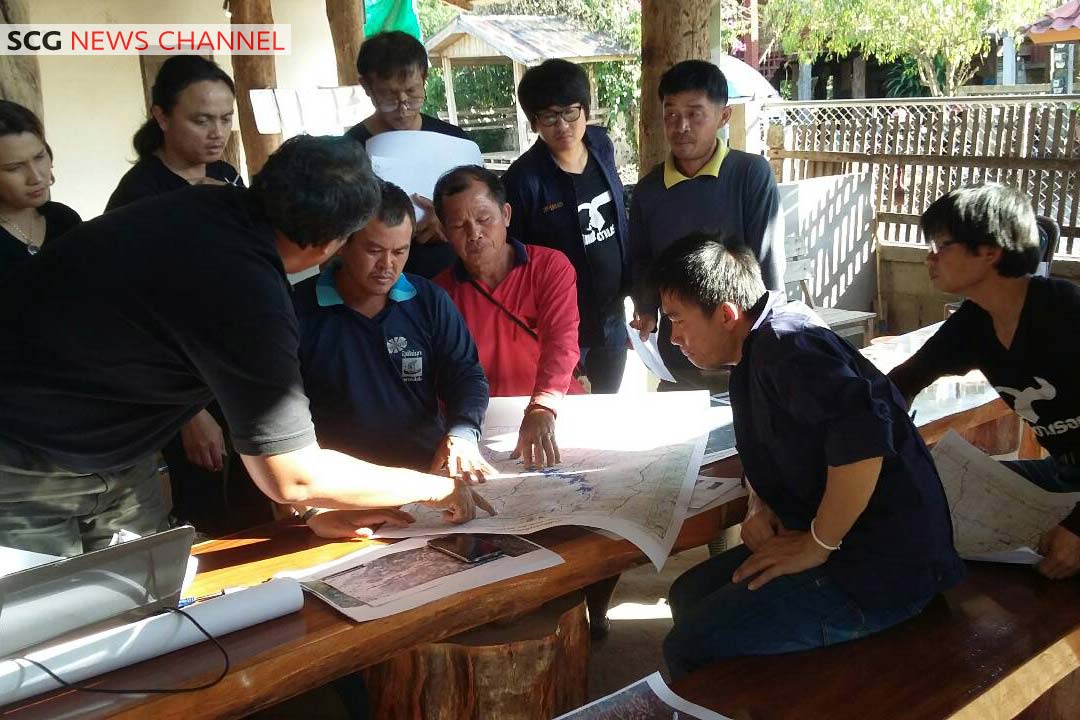
No matter how severe the drought crisis becomes, if communities, the government, and the private sector can work together to learn, implement projects, and share resources using appropriate knowledge and technology that is right for each local area and closely follow up on results, Thailand will certainly be able to overcome this drought crisis or any other natural disasters that may occur.
 ดาวน์โหลดข่าว
ดาวน์โหลดข่าว